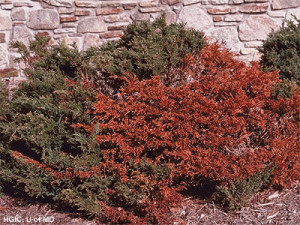How Will The Cold Temperatures Affect My Landscape?
With record breaking low temperatures (9 degrees this morning!), one would wonder if these conditions are bad for our landscape? Will these temperature harm or kill our plants?
Plants Can Fend For Themselves
Plants are well suited to deal with cold temperatures. Trees and shrubs go dormant. Perennials die back to the ground. However, there is some damage that can occur to our plants.
Cold injury varies with plant species, age, the general vigor of the plant, and site and soil characteristics. It is unlikely that the cold could have much if any impact on native plant materials in their natural habitats. But the fact of the matter is that we use a lot on non-native plants in the landscape that are not quite as cold hardy.
Types of Cold Damage
One type of cold injury that is most certain is the killing of flower buds on those trees and shrubs that are marginally hardy. Flower buds are typically less hardy than leaf buds. We saw this happen last winter with Hydrangeas and some varieties of Crape Myrtles. Last winter’s cold resulted in less or no blooms on these plants.
Another type of cold injury is the yellowing or bronzing of the leaves of evergreens when exposed to winter sun and wind. These usually return to normal color when growth resumes in the spring. Winter injury may be confused with early stages of some fungal diseases.
Cold injuries such as sun scald and frost cracks on tree trunks often occur in response to sudden and wide fluctuations in temperature of wood. This typically takes place on cold days when the sun warms the sunny side of the trunk to a temperature above freezing, causing some expansion of the wood. Unfortunately this can lead to total loss of the plant.
What Can Be Done?
The best things you can do to help your plants survive a winter cold blast is to take good care of them the rest of the year. Proper fertilization, pruning, pest control and mulching go a long way to keeping plants healthy. Always prune off damaged and dead parts of plants to avoid further problems down the road.
The good news is that we do not see a lot of winter cold damage on plants around here and generally our plants recover very well.
Allentuck Landscaping Co. designs, installs and maintains landscapes in Montgomery County, Maryland including Bethesda, Chevy Chase, Potomac, North Potomac, Darnestown, Rockville, Gaithersburg, Germantown, Clarksburg, Ijamsville and Urbana.

